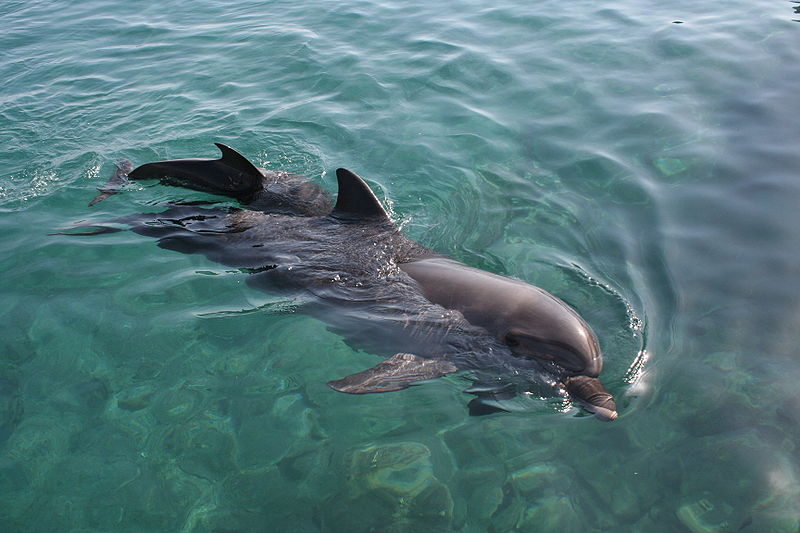
Photo credit: Faraj Meir
As fellow mammals, marine mammals spend a lot of time doing the same things we do. Shopping or hunting for food, eating, finding a mate, having sex, raising young, traveling and escaping bad guys are all activities occupying the time of marine mammals across the globe. But we have adapted to solid ground under our feet, while they have adapted to spending all or most of their lives in the water.
The Encyclopedia of Marine Mammals kindly reminds readers that we humans have come to rely on vision as our top sense in navigating the world. But for marine mammals, vision only goes so far in dark ocean depths and sound is actually much more reliable and travels easily underwater. Dolphins have really embraced sound and use it to locate prey through a technique called echolocation. “Most toothed whales echolocate by producing a click and then listening for echoes from surrounding targets.” This serves as a very sophisticated built-in sonar device and the perfect hunting tool.
Sperm whales are also toothed whales and use echolocation to hunt jumbo squid, but in some cases they also use echolocation to capture easy prey. I saw video footage of a sperm whale using echolocation to snag a fish already trapped by a fishing longline. This whale was so good that he very carefully approached the fish and nudged it with his mouth. The fish didn’t come off the first time, so the sperm whale circled back and nudged the fish a second time freeing it from the hook. The story ended off-screen, but of course the whale probably ate that fish. This footage was amazing to watch because the sperm whale knew exactly what he was doing, this massive animal never once touched the fishing line. An impressive feat prompted by some very sneaky behavior.
Well, I barely had time to scratch the surface on the topic of marine mammal behavior, stay tuned for more on this subject in the next post.
Leave a Reply